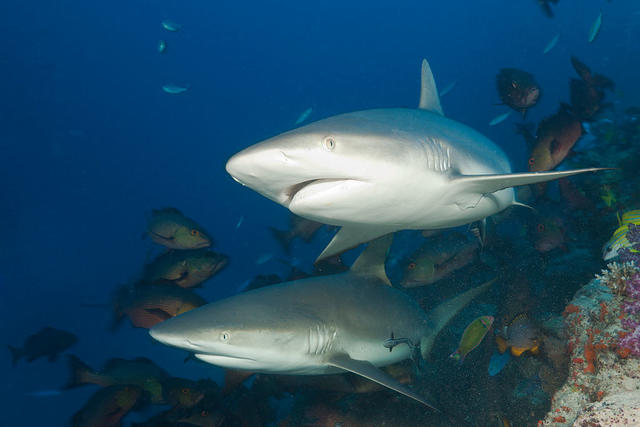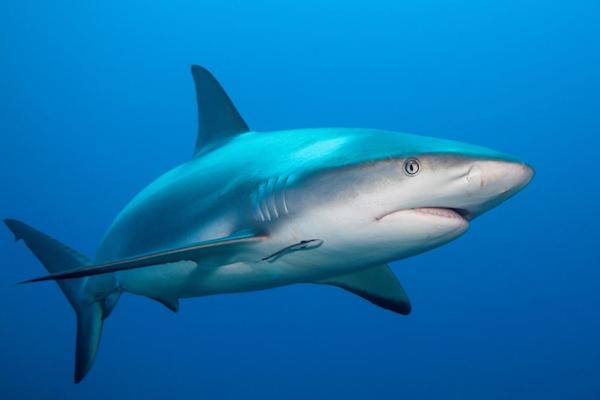Protecting Requiem Sharks CITES 2022
Laurie King
Sharks are at risk of extinction. Surprised? Sharks are perceived as invulnerable by many, especially after movies like Jaws were released. The truth is that humans are much more dangerous to sharks than vice versa. Our consumerism is killing them.
Human activity seriously impacts shark survival. Two threats in particular stand out and are estimated to kill about 100 million sharks per year. First, shark finning, which is when a fisherman slices off a shark’s fin and discards the rest of the body back into the ocean. This is mostly done to meet demand for shark fin soup. Second, bycatch, is when a shark is accidentally caught along with the intended fish. This is exacerbated by the use of gill nets for fishing. Some places, including California, have banned the sale of shark fin soup and the use of gill nets. But global protection is desperately needed.
The largest family of sharks, the Carcharinidae, is commonly known as ‘Requiem Sharks’ and includes some of the best-known species, including the reef sharks that divers often encounter, the tiger shark and the blue shark. They are the classic animals that most often come to mind when we hear the word shark. These species are commonly impacted by fisheries.

To help ensure healthy populations of requiem sharks, as well as viable fisheries for the future, the 184 governments that are parties to the Convention on International Trade in Endangered Species (CITES) are considering a proposal to regulate trade in these species at the family level, thereby making it easier to effectively protect the most vulnerable of the commercially exploited species.
The proposal is based on 19 shark species being considered for protection at this year’s CITES conference that are listed as critically endangered or endangered according to a recent International Union for the Conservation of Nature (IUCN) Red List of Threatened Species. The table below is from CITES Proposal 37, page 36, regarding requiem sharks; the table and its sources can be found here.
Summary of global population declines for 19 species of requiem shark
| Species | Population decline |
|---|---|
| Grey reef | 59% globally and over 75% declines in more than half the countries surveyed |
| Ganges shark | Near 100% depletion |
| Dusk | Over 80% |
| Smalltail | 50–90% |
| Sandbar shark | 50–79% |
| Borneo shark | 36–82% |
| Pondicherry shark | Near 100% depletion |
| Smoothtooth blacktip shark | 50–80% |
| Sharptooth lemon shark | 50–79% |
| Caribbean reef shark | 50% or greater |
| Daggernose shark | Greater than 99% |
| Night shark | 50–79% |
| Whitenose shark | 50–79% |
| Blacknose shark | 50–79% |
| Whitecheek shark | 50–70% |
| Lost shark | Near 100% depletion |
| Pacific smalltail shark | Over 80% |
| Borneo broadfin shark | 50–79% |
| Broadfin shark | 67% or greater |
This represents about one third of the requiem shark species. But these sharks can look similar, fisheries can be indiscriminate and can misidentify and mislabel more threatened species with the names of more common ‘lookalikes’.
Threats to sharks
Demand for, and the value of, shark fins and their meat is poised to drive these species to extinction because almost none of their fisheries are regulated. In fact, Proposal 37 argues that protection is warranted because of the large size of these species, their coastal distribution, high fishing pressure and lack of trade or catch management throughout their range (Quieroz et al. 2019).
Sharks are particularly vulnerable to population declines because shark populations take a long to recover as they mature slowly and have only a few young. The litter size of sharks in the requiem family ranges from just one or two pups to (rarely) over 100. The range of these species is mostly in coastal areas where fishing activity is concentrated. Further, many species of sharks have long migratory routes and cross international borders. But almost none of the fisheries where they are found are regulated.
The value of healthy shark populations
Sharks are an important part of the ocean ecosystem. As an apex predator at the top of the food chain, they keep oceans healthy by keeping other populations in check.
Humans also benefit from sharks. In many coastal areas, local communities rely on their fisheries for food. Protecting sharks from depletion with regulations and management of fisheries, will protect people’s livelihoods and food security in the future, as well as the sharks themselves.
Keeping species alive benefits ecotourism. Proposal 37 notes this is especially true for “small island, dive-tourism-focused countries where sustainable, high-value industries are badly
needed for local livelihoods.” Many tourists hope to see sharks, and in reef environments it is the requiem sharks they are most likely to encounter.

Proposal for Potential Solutions
Due to the similarities in appearance and prevalence of Carcharhinids in the international trade, the proposal being considered at COP19 seeks to add not only the 19 species recognized as endangered, but all species of the Carcharhinidae (requiem shark) family to Appendix II. All remaining species in the family would be included as lookalikes under Annex 2b, Criterion A. Practically speaking, this designation allows regulated trade to continue, supporting the interests of fishermen, exporters and importers, while also preserving these species.
Proponents: Bangladesh, Colombia, Dominican Republic, Ecuador, El Salvador, European Union, Gabon, Israel, Maldives, Panama, Senegal, Seychelles, Sri Lanka, Syrian Arab Republic, United Kingdom of Great Britain and Northern Ireland.
The preliminary assessment by the Secretariat of CITES is recommending that the proposal be adopted.
What Sea Save Foundation Is Doing
We are working with delegates at this year’s conference to enact changes to international trade of endangered species that will protect them globally.
Regarding sharks in particular, our staff of scientific experts will discuss the economic advantages of shark populations. We can explain how new, inexpensive DNA tests can streamline customs procedures and make it feasible to enforce CITES decisions.
We are credible, scientific and connected. We’ve sent three delegates to this year’s conference, including our director, Georgienne Bradley, who recently earned a master’s degree in the Management and Conservation of Species in Trade. To date, only a select number of students have completed this specialized training in scientific bases, technique and instruments that enable CITES implementation and development to combat illegal international trade of wildlife.




